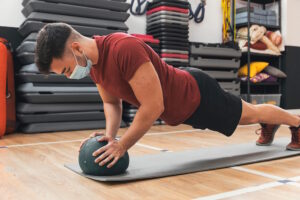
In the realm of fitness, customization is the key to unlocking the full potential of any practice, and Pilates is no exception. As a fervent advocate for personalized Pilates routines tailored to individual flexibility needs, I’m excited to guide you through the process of crafting workouts that cater to your unique body. Let’s explore how Pilates enhances flexibility, highlight an essential exercise, address the question of whether Pilates requires existing flexibility, and delve into the art of modifying Pilates exercises for optimal results.
How can Pilates help with flexibility?
Pilates is a treasure trove of exercises designed to increase flexibility while promoting strength, stability, and body awareness. By incorporating dynamic stretches and controlled movements, Pilates gradually lengthens muscles, enhances joint mobility, and improves range of motion. The deliberate focus on engaging specific muscle groups while performing exercises ensures that flexibility gains are functional and balanced.
What is one exercise that can help an individual’s flexibility?
One highly effective exercise for enhancing flexibility is the “Swan” exercise. This exercise targets the muscles of the spine and the back of the body, promoting extension and elongation. As you lift your chest while lying face-down, you engage your spinal extensors, glutes, and hamstrings. The controlled movement gently stretches and strengthens these muscle groups, fostering improved flexibility along the spine and posterior chain.
Does Pilates require flexibility?
The beauty of Pilates lies in its adaptability to diverse fitness levels. Pilates is not exclusively for those who are already flexible; rather, it is a practice that fosters gradual and sustainable progress. Whether you’re a beginner or more advanced, Pilates can be customized to accommodate your current level of flexibility. The practice’s focus on controlled movement and mindful engagement allows you to work within your range of motion while steadily improving it over time.
How do you modify Pilates exercises?
Modifying Pilates exercises is an art that enables practitioners to tailor their workouts to individual flexibility needs. Here are key strategies to consider:
1. Props and Supports: Incorporate props such as blocks, straps, or foam rollers to assist in achieving proper alignment and to provide support during stretches.
2. Range of Motion: Begin exercises with a smaller range of motion and gradually increase it as your flexibility improves.
3. Alternative Positions: Modify positions to suit your body. For example, if a stretch is challenging while lying down, try performing it seated or standing.
4. Mindful Progression: Listen to your body and progress at a pace that feels comfortable. Avoid pushing into painful ranges of motion.
Summing it Up
Customizing Pilates workouts to meet individual flexibility needs is a testament to the adaptability and inclusivity of this practice. Pilates offers an array of exercises that can be tailored to beginners and experienced practitioners alike. Flexibility is not a prerequisite; instead, it’s a journey that Pilates supports with its emphasis on controlled movement and targeted engagement. By modifying exercises based on your unique requirements, you can create a Pilates routine that not only enhances flexibility but also nurtures strength, balance, and overall well-being. Embrace the art of customization, and let Pilates become a personalized path toward a more flexible and vibrant you.